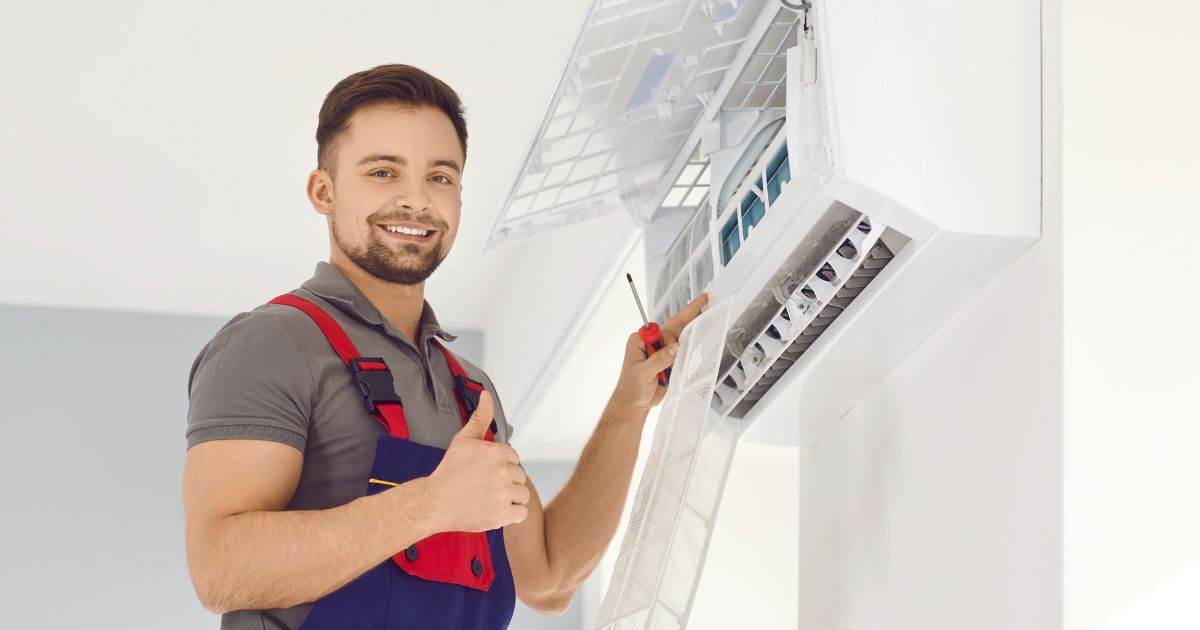Why Indoor Air Quality Services Matter
Indoor air quality services, including air quality testing services, are crucial for maintaining a healthy living environment, especially when we spend about 90% of our time indoors. Poor indoor air can lead to various health effects, from minor irritations like headaches and itchy eyes to more severe conditions.
Factors like secondhand smoke, dust, and allergens can all degrade the air we breathe at home.
Key Indoor Air Quality Services:
- Air Quality Testing: Detect pollutants and ensure safe air.
- Cleaning Services: Remove mold and allergens from HVAC systems.
- Ventilation Solutions: Improve airflow and reduce indoor contaminants.
- Air Purifiers: Use advanced technologies to clean single rooms or whole houses.
Certified technicians play a vital role in providing these services, ensuring that all assessments and installations are performed to the highest standards.
Understanding and managing the air quality in your home can protect your health and improve overall comfort. The quality of air can affect how you feel every day. Even if your home is clean, invisible pollutants like mold spores and dust can accumulate, highlighting the importance of regular air quality checks and maintenance.
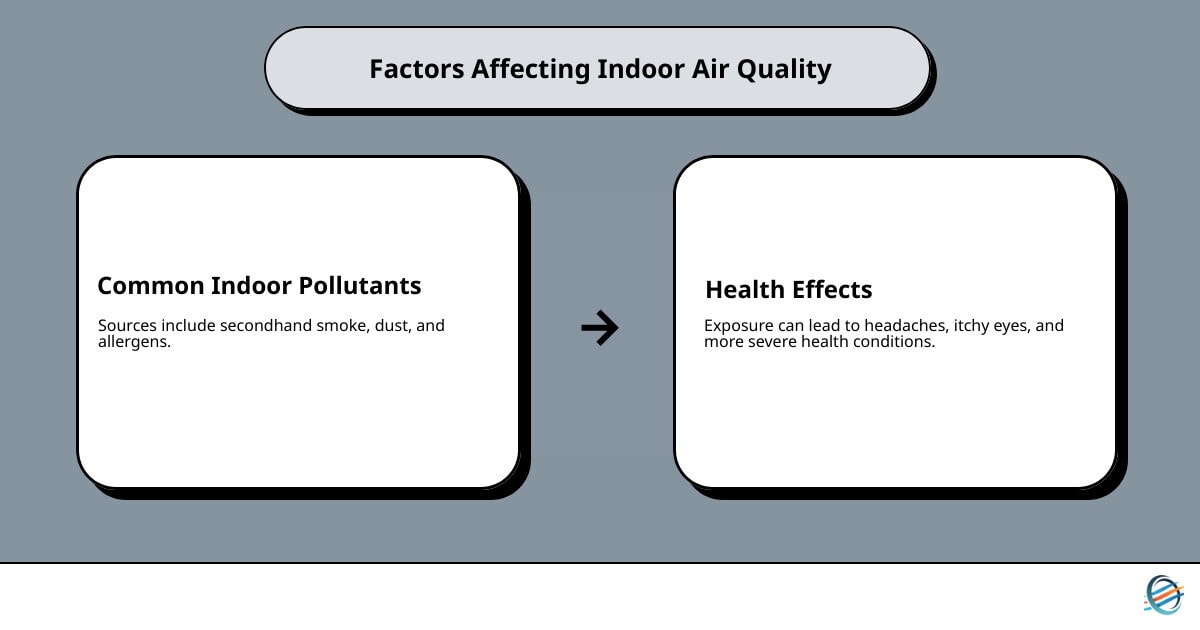
Table of Contents
Understanding Indoor Air Quality
Indoor air quality is a crucial aspect of our living environment. While most people concentrate on the air indoors, the air outdoors is often significantly cleaner. Since we spend around 90% of our time indoors, the air we breathe inside our homes and offices can significantly impact our health.
Let’s explore the sources of indoor pollutants, common air quality problems, and the health symptoms associated with poor air quality.
Pollutant Sources
Indoor air pollutants come from various sources. Some common ones include:
- Secondhand Smoke: Cigarette smoke is a major indoor air pollutant. It contains harmful chemicals that linger in the air and can affect everyone’s health, especially children and older adults.
- Cooking and Heating Appliances: Gas stoves, ovens, and heaters can release carbon monoxide, carbon dioxide, and other pollutants if not properly ventilated.
- Cleaning Products: Many household cleaners contain volatile organic compounds (VOCs) that evaporate into the air, potentially causing respiratory issues.
- Building Materials: Older homes may contain asbestos or lead, both of which are hazardous when disturbed.
Air Quality Problems
Several factors can degrade indoor air quality, leading to problems that affect our well-being:
- Mold and Mildew: These can grow in damp areas and release spores into the air, causing allergic reactions or respiratory issues. Improper air duct installation can lead to leaks, increasing the likelihood of mold growth and dust accumulation in the ducts.
- Dust and Allergens: Dust mites, pet dander, and pollen can accumulate indoors, triggering allergies and asthma.
- Poor Ventilation: Without proper airflow, pollutants can build up indoors, making the air stale and unhealthy.
Health Symptoms
The effects of poor indoor air quality can range from mild to severe. Some common symptoms include:
- Headaches and Dizziness: Often caused by exposure to VOCs or carbon monoxide.
- Irritated Eyes and Throat: Dust, smoke, and chemical fumes can cause these symptoms.
- Fatigue and Nausea: Poor air quality can lead to a general feeling of tiredness or discomfort.
These symptoms typically improve once you leave the affected area, highlighting the importance of maintaining good indoor air quality.
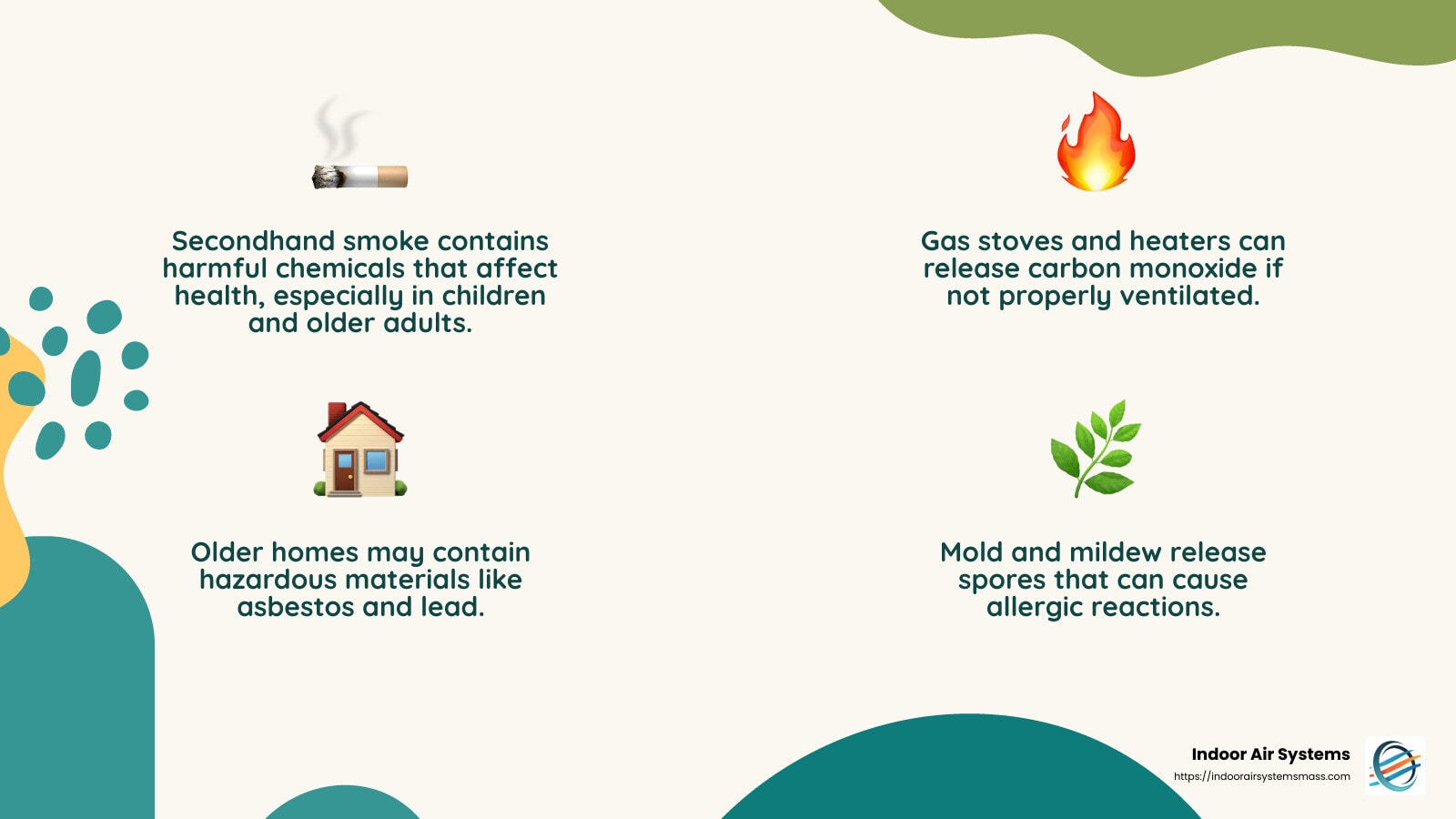
By understanding the sources and effects of indoor air pollution, you can take steps to improve your living environment. In the next section, we’ll discuss how indoor air quality services can help keep your home safe and healthy.
Indoor Air Quality Services
Indoor air quality services, including air quality testing services, are essential for ensuring that the air inside your home or office is clean and safe to breathe. These services typically include IAQ testing, remediation, and maintenance.
Air quality testing services play a crucial role in identifying harmful pollutants that can adversely affect health, such as respiratory problems and allergies. By detecting and mitigating these harmful chemicals, bacteria, and other irritants, these services help protect your health.
Let’s break down each of these components:
IAQ Testing
IAQ testing is the first step to understanding the quality of air in your indoor environment. This process involves measuring the levels of various pollutants, such as volatile organic compounds (VOCs), carbon monoxide, carbon dioxide, mold, and dust. The U.S. Environmental Protection Agency highlights that indoor pollutant levels can be significantly higher than outdoor levels, making testing crucial.
Why Test?
- Identify Hidden Pollutants: Testing helps uncover pollutants that aren’t visible, like VOCs from cleaning products or off-gassing from new furniture.
- Health Protection: Knowing what’s in your air can help protect against symptoms like headaches, dizziness, and respiratory issues.
- Peace of Mind: Regular testing ensures that your indoor environment remains safe over time.
Remediation
Once testing identifies issues, remediation is the next step. This involves addressing the sources of pollution and improving air quality through various methods. It is crucial to address dirty air to ensure a healthier indoor environment. For example, if mold is detected, it may need to be professionally removed to prevent health problems.
Common Remediation Techniques:
- Mold Removal: Safely eliminating mold from affected areas.
- Ventilation Improvements: Enhancing airflow to reduce pollutant buildup.
- Air Purification: Using air purifiers to remove contaminants from the air.
Maintenance
Maintaining good indoor air quality is an ongoing process. Regular maintenance ensures that your air remains clean and that any new issues are promptly addressed.
Key Maintenance Practices:
- Changing Air Filters: Regularly replacing filters in HVAC systems to prevent dust and allergens from circulating.
- Routine Inspections: Annual inspections of heating and cooling systems to catch potential issues early.
- Duct Cleaning: Cleaning air ducts to remove accumulated dust, mold, and other debris.
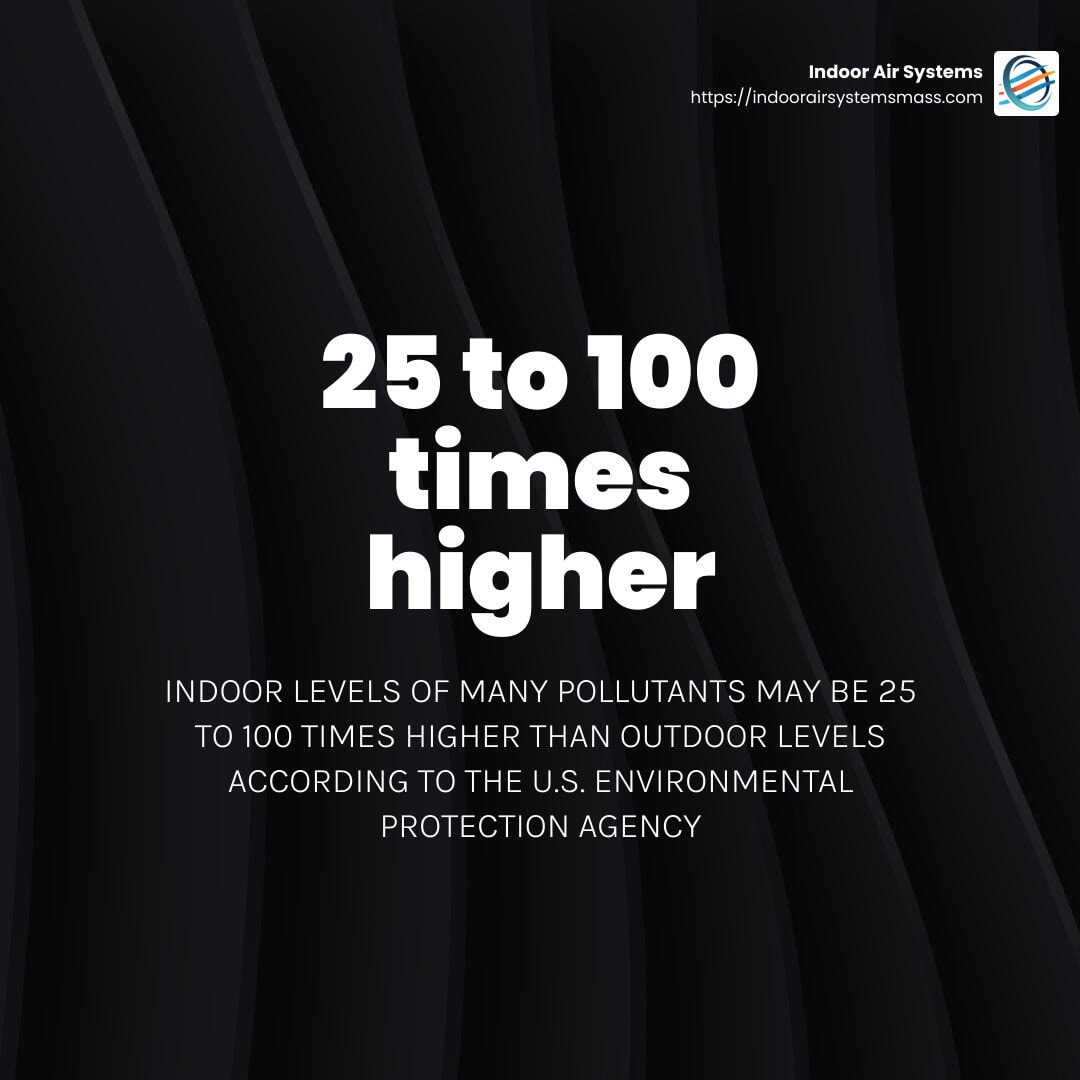
By utilizing indoor air quality services, you can create a healthier living space and reduce the risk of health problems associated with poor air quality. In the next section, we’ll explore practical ways to improve indoor air quality in your home or office.
How to Improve Indoor Air Quality
Improving indoor air quality is crucial for maintaining a healthy and comfortable living environment. Let’s explore some effective methods: ventilation, air filters, and portable air cleaners.
Ventilation
Proper ventilation is key to reducing indoor air pollution. It helps dilute pollutants and bring in fresh air from outside.
Ways to Improve Ventilation:
- Open Windows and Doors: This is the simplest way to increase airflow, especially when cooking or using strong cleaning products.
- Use Exhaust Fans: Install fans in kitchens and bathrooms to remove moisture, odors, and pollutants directly.
- Consider Mechanical Ventilation Systems: These systems can provide a consistent flow of fresh air, especially in tightly sealed homes.
Air Filters
Air filters are essential for trapping dust, pollen, and other airborne particles. They are used in HVAC systems to maintain clean air.
Choosing the Right Air Filter:
- Check the MERV Rating: A higher Minimum Efficiency Reporting Value (MERV) rating means better filtration. However, ensure your HVAC system can handle it.
- Replace Filters Regularly: Change filters every one to three months to maintain effectiveness and airflow.
Portable Air Cleaners
Portable air cleaners, also known as air purifiers, can improve air quality in specific rooms or areas.
Benefits of Portable Air Cleaners:
- Targeted Cleaning: They are ideal for rooms with higher pollutant levels, like kitchens or bedrooms.
- Variety of Technologies: Options include HEPA filters, activated carbon, and advanced oxidation for different needs.
- Easy to Use: Simply plug them in and let them work. Remember to change filters as recommended by the manufacturer.
By focusing on these strategies, you can significantly improve the air quality in your home or office. In the next section, we’ll answer some frequently asked questions about indoor air quality services.
Conclusion
What sets us apart is our commitment to personalized attention. Unlike larger companies, we focus on providing responsive, custom services without the high overhead costs. This means you get quality service that fits your specific needs, whether it’s improving your indoor air quality or maintaining your HVAC systems.
We understand that indoor air quality services are crucial for a healthy home environment. That’s why we offer comprehensive testing, remediation, and maintenance services. Our team is dedicated to helping you breathe easier and live healthier.
Contact us today at Indoor Air Systems, we pride ourselves on being a trusted name in Central Massachusetts for over 20 years. Our expertise in residential heating and cooling services, especially with mini-split systems, ensures that we deliver not just solutions, but peace of mind to our clients.
For more details on how we can assist you, explore our services.
Thank you for considering Indoor Air Systems. Your comfort and health are our top priorities.
Frequently Asked Questions about Indoor Air Quality Services
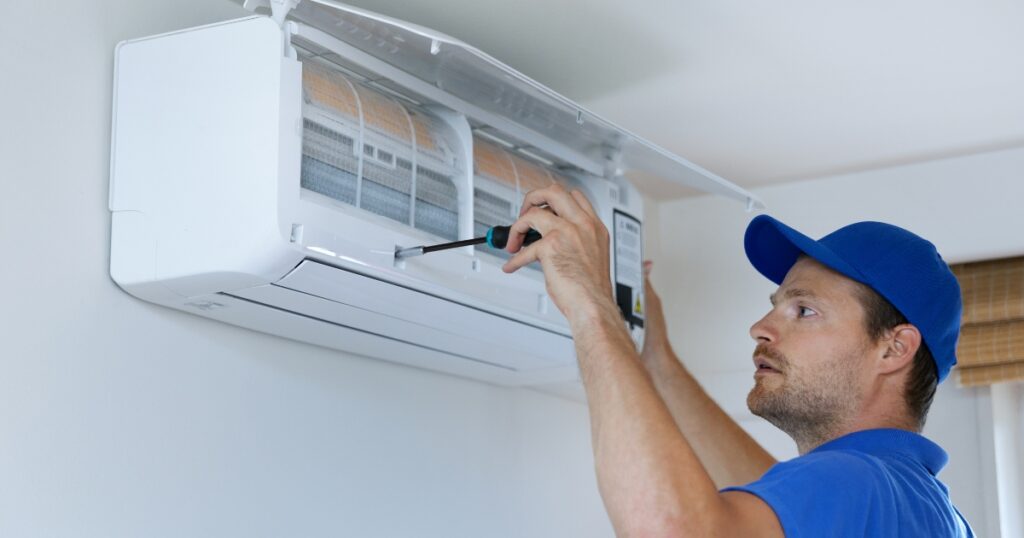
Is indoor air quality testing worth it?
Absolutely. Indoor air quality testing helps identify hidden health risks and airborne toxins in your home or office. You might not see them, but pollutants like mold spores, volatile organic compounds (VOCs), and particulate matter can cause serious health issues.
Symptoms can range from headaches and tiredness to more severe conditions like respiratory problems. Testing gives you a clear picture of what’s in your air, so you can take action to protect your health.
How can I improve the quality of my indoor air?
Improving air quality starts with reducing pollutants. Avoid chemicals like harsh cleaning products and choose natural alternatives. Regular cleaning is also key. Dust and vacuum frequently to minimize dust and allergens. Additionally, consider using air purifiers and ensuring proper ventilation to keep air fresh and clean.
How do you check air quality in a house?
Checking air quality at home is easier than you might think. Start with air quality testing services to professionally assess and improve indoor air quality. Additionally, an indoor air monitor can measure pollutants like CO2, VOCs, and particulate matter, giving you real-time data on air quality.
For specific concerns like mold, professional mold testing can pinpoint problem areas and guide remediation efforts. With these tools, you can stay informed and proactive about the air you breathe.
By understanding these key aspects of indoor air quality, you can make informed decisions to ensure a healthier environment for you and your loved ones.
Our Content
At Indoor Air Systems, LLC, we provide specialized HVAC services with a personal touch. Serving Central Massachusetts, we focus on the installation and maintenance of mini-split systems, split system air conditioner, heating and cooling system, heating air, ensuring efficient and cost-effective heating and cooling solutions. Our locally owned and operated business allows us to offer exceptional customer attention and responsiveness without the high costs associated with larger companies. Choose Indoor Air Systems for reliable, expert service tailored to your specific needs.

